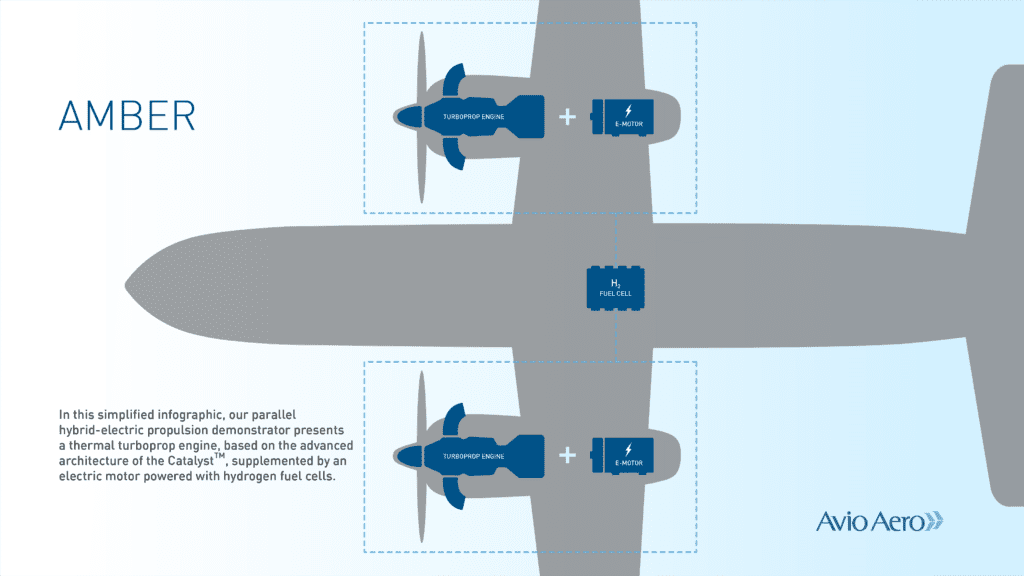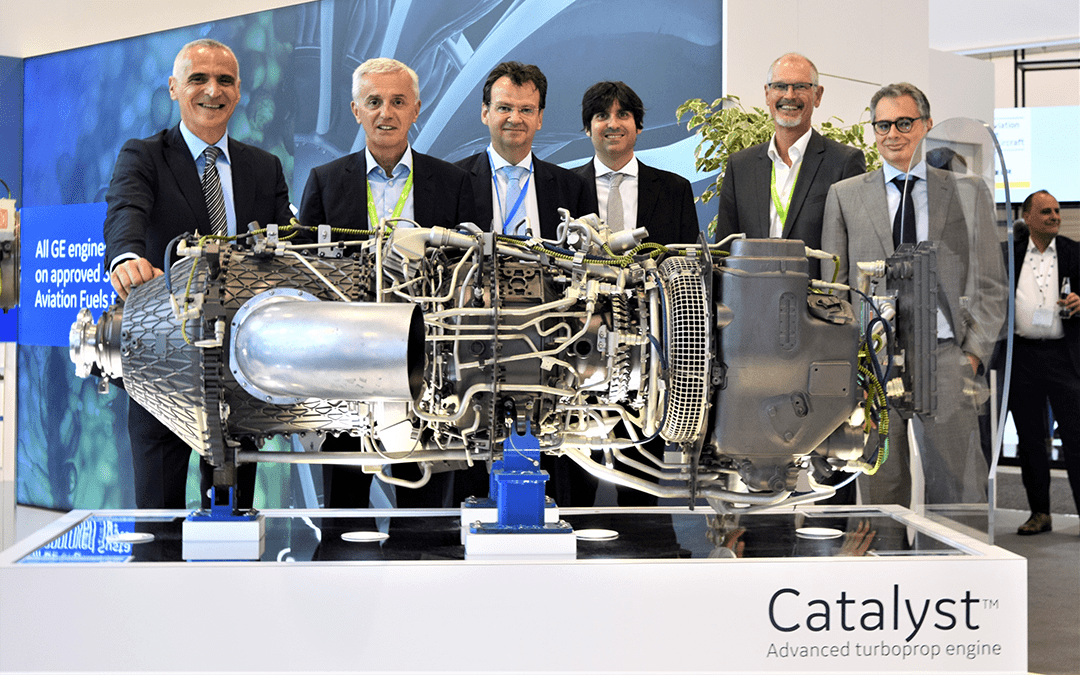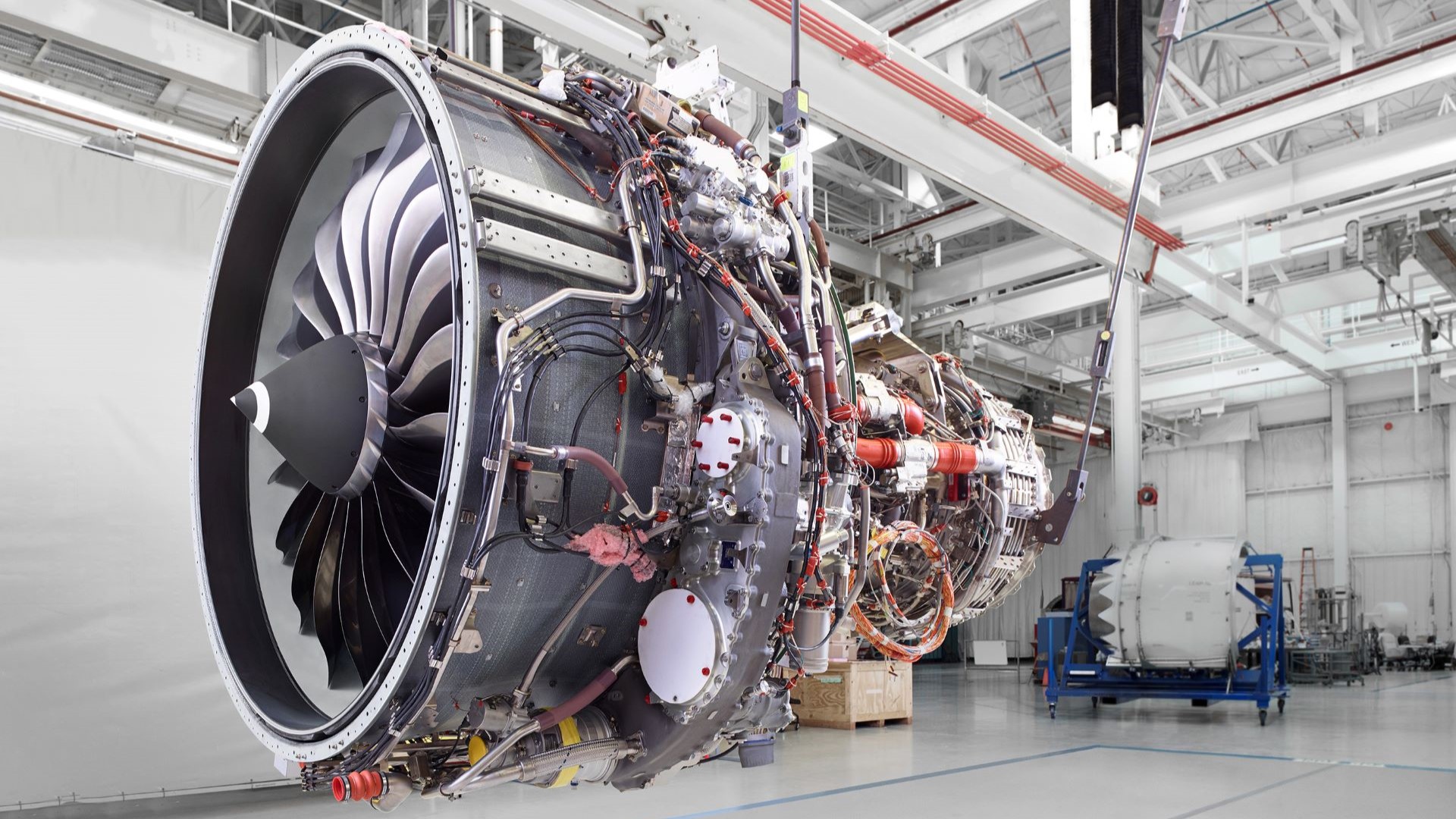Power Play: Avio Aero to Lead European Project to Explore Fuel-Cell-Powered Hybrid Electric Systems
December 15, 2022 | by GE Reports
GE Aerospace and other manufacturers have been working for years to find ways to help decarbonize the airline industry. It’s quite a challenge, of course. Jet fuel produces carbon emissions, yet it’s a powerful form of energy that has dominated aviation since the Wright brothers went airborne in 1903.
But one promising path is the development of hybrid electric engines, which combine the energy of jet fuel with fewer emissions and less maintenance and noise. It’s a technology that is compatible with sustainable aviation fuel and new engine technologies that are also intended to lower carbon emissions. Last year, NASA and GE disclosed a plan to develop a megawatt-class integrated hybrid electric powertrain for commercial aviation, and earlier this year Boeing joined that project. This week, in the latest example of the hybrid electric initiative, GE Aerospace’s Avio Aero business announced it will lead a demonstration project, partly funded by the Clean Aviation Joint Undertaking and the European Commission, to advance hybrid electric propulsion with hydrogen fuel cells.
“We need to recognize that there will be a number of different solutions to this problem, not just a single solution across the entire market,” says Luca Bedon, head of advanced technologies at Avio Aero. Over the next four years, research efforts by the 21-member consortium will lead to tests of a ground-mounted rig that combines an electric motor driven by hydrogen fuel cells supplementing the power of a traditional gas turbine engine.
Hydrogen, the most abundant element in the universe, produces no CO2 emissions when it burns. But the challenges of using it as an aviation fuel are daunting. For example, even when stored in liquid form, it would take up a lot of space. While GE and partners are working on solutions to that problem, “the volume is playing against you,” Bedon says, which means you would need to reduce passenger capacity.
But hydrogen does have one big thing going for it: It has very high specific energy, meaning it produces a lot of power for its mass. According to the Department of Energy, raw hydrogen has three times the specific energy of gasoline. This may explain why hydrogen has found some early success in trucking, which needs more power than a passenger car. In aviation, hydrogen fuel cells systems show promise in regional and smaller aircraft in future generations.
“The reason why we’re investing in this technology is because the fuel cell systems have the potential to store significantly more energy than what you can store in a battery,” says Bedon.
For now, Avio Aero and its partners have a goal of developing a demonstrator that reduces emissions using a parallel hybrid electric system that starts to pare back the amount of jet fuel needed to complete short-haul routes. “By combining electric power and thermal power, you will obtain an extremely efficient propulsion system that can reduce emissions, thus enabling a faster path towards net zero,” Bedon says.
 Luca Bedon, head of advanced technologies at Avio Aero. Top: Avio Aero will test hybrid electric and fuel cell technologies using the Catalyst turboprop engine. Images credit: Avio Aero.
Luca Bedon, head of advanced technologies at Avio Aero. Top: Avio Aero will test hybrid electric and fuel cell technologies using the Catalyst turboprop engine. Images credit: Avio Aero.
As he points out, the team has to consider the emissions produced in making hydrogen. Hydrogen fuel cells are ultra-clean in their output. But hydrogen can be made in several different ways, each producing differing carbon emission counts, for example by using natural gas or using electricity created by everything from coal to nuclear power to wind and solar.
The project, which goes by the name AMBER, will involve Germany-based H2FLY, which is developing the fuel cells for the undertaking. Avio Aero will modify its existing Catalyst turboprop engine for the project, for integration with the hybrid system.
The building blocks toward the eventual success of this technology are falling into place. The goal is to make hydrogen from clean sources and use energy-dense hydrogen fuel cells to drive an electric motor. If projects like this one pay off, it may mean the beginning of a long goodbye to petroleum-powered flight.
This story originally appeared on GE Reports.





